Twenty years ago this year, the Smoking Cessation Leadership Center, SCLC, started out to increase the number of quit attempts made by individuals who smoke by increasing the types of healthcare personnel who make interventions. Now, looking back on what's been accomplished in public health and tobacco control during the last two decades, we wanted to highlight 20 champions who have helped us in our efforts. Either they collaborated with us to make some meaningful change, taught us something we didn't know or spoke up about the positive effect SCLC has had on their lives as individuals or in their organizations.
Keep checking back each month for new stories!
Stories of 20 Champions
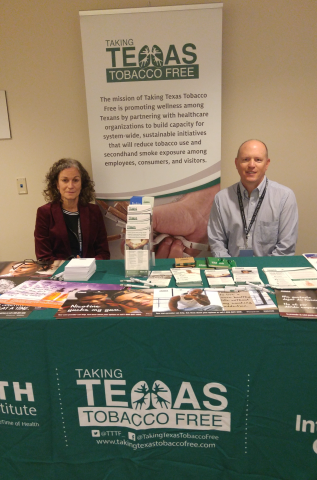
of the TTTF team
Taking Texas Tobacco Free (TTTF) was founded in 2012, the same year the state held a leadership academy summit with SCLC. There are 254 counties in Texas—more than any other U.S. state—so, helping them ALL go tobacco free is a bold ambition. But isn’t that what Texans are known for?!
The TTTF team is made up of clinical staff at Integral Care, an Austin-based agency that works to improve the lives of those living with behavioral health and other conditions in Travis County, Texas, as well as research faculty and staff at the University of Texas MD Anderson Cancer Center and the University of Houston. Through TTTF, they are currently working with partners in small, rural centers to ensure services, and those who can provide them, reach beyond the metro areas.
While the team members are the first to point out that there is more work to do, they have already seen a lot of positive changes since TTTF was formed, not least of which is the culture around smoking, particularly in mental health and substance use treatment facilities.
“I was a drug and alcohol counselor when I started this work,” Integral Care’s Tobacco Prevention and Wellness Partner Relations Manager, Bryce Kyburz, recalls. “And at the facility where I worked, I was the guy who took orders and went to buy the cigarettes for everyone!”
Both Bryce and Teresa Williams, director of cinical services for Integral Care, remember a time not so very long ago that behavioral health professionals weren’t aware of the facts about tobacco and its disproportionate harm on the population they serve. They also remember that finding out is what made them commit to campaigning for tobacco-free recovery services.
“We work with people suffering from serious mental illness, substance use disorders and chronic disease, and we see them dying earlier, sometimes by 25-30 years, because of tobacco,” says Teresa. “Most people we encountered wanted to quit, and it was really eye opening to see that they could without too much difficulty when there were resources available. That’s when we knew we had to make it a priority, because truly, helping people stop smoking is the single most important health intervention we can make.”
Bryce agrees saying, “In the early years of the program when we started talking to people about taking their facilities tobacco free, I heard a lot of people ask, ‘are you kidding?!’ so it was really exciting to be able to show evidence-based approaches that had been successful to prove that, ‘no! I’m not kidding! I’m not making this up!’”
Bryce and Teresa credit SCLC and the Rx For Change curriculum with providing the foundational knowledge that built their own awareness as well as their confidence in sharing information that helps bring others on board in efforts to create tobacco-free facilities.
Integral Care’s TTTF counterpart is the University of Texas MD Anderson Cancer Center and a research staff that generates some of the evidence the community health center liaisons rely on to help make the case to the facilities they encourage to go tobacco free.
Led by Lorraine Reitzel, PhD, Principal Investigator of the Tobacco Health Equity and Cancer Prevention Science Lab and professor at University of Texas MD Anderson Cancer Center, the research team is focusing on groups, like those with mental health and substance use disorders, who are disproportionately impacted with poor health outcomes and how the social and environmental context contributes to their health and health behaviors.
“Our TTTF model works very well,” says Dr. Reitzel. “Integral Care helps implement our findings in the field so that, together, we can be more effective than either entity would be by itself. We’re both aligned in that we have the same mission and the same passion, but we move it forward in different venues which broadens the impact.”
To date the TTTF team has conducted more than 300 trainings educating nearly 16,000 professionals about treating tobacco use disorder and have a popular “train the trainer” module available on their website. With close to 350 participating agencies that include mental health authorities, substance use treatment centers, health centers and agencies serving people who are experiencing homelessness, the TTTF team has reached 905,694 individuals with clinical services and health promotion material.
“As successful as we’ve been, we still haven’t reached everyone,” Bryce says. “But we know we’re not alone in continuing this work until we do!”
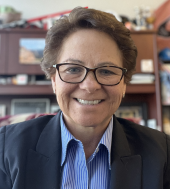
Linda Aragon looks back on the decade she spent as Director of the Los Angeles County Tobacco Control and Prevention Program fondly as some of the most impactful and meaningful work she’s been involved in over the course of 32 years in public health. She also describes it as the hardest work she’s ever done and the most she’s ever learned.
“SCLC came into the picture at the perfect time,” she recalls. “We all had this feeling that we were on the precipice of something huge in L.A. County and everyone really believed that we could do something new and different.”
At the time, around 2003, most of the policies around tobacco were voluntary, which meant, for example, an apartment building that had gone smoke-free, could revert to becoming a smoking building again if the landlord changed. So, the “something new and different” Linda and her team wanted to do would mean implementing evidence-based policies (with a capital P) and environmental change strategies that promote tobacco cessation and smoke-free environment.
“We are large—2nd only to New York—and we actually had some funds to work with, so we should have been a major player, but at the time it still felt like we were doing work without really getting anywhere,” says Linda.
Enter SCLC and their then-new deputy director Connie Revell with her performance partnership model. “SCLC helped us convene a Smoking Cessation Summit with about 130 local, state, and national leaders who weren’t the typical participants in an endeavor like this,” Linda remembers, “but working together could move the needle in reducing smoking prevalence and decrease exposure to secondhand smoke, especially in disadvantaged communities in L.A. County. “The response was huge and it enabled us to extend this important work beyond public health, creating significant change in how we tackled tobacco use in L.A. County
During Linda’s tenure, the 88 cities in L.A. County passed more than 100 different smoke-free policies that still enhance the quality of life for those who live and visit the L.A. metro area, including smoke-free multi-unit housing, smoke-free beaches, smoke-free outdoor dining, smoke-free hospital campuses, smoke-free parks and more. These efforts were supported by robust media campaigns and youth led coalitions that contributed to LA County’s success in working with local communities and cities toward achieving meaningful policy and systems changes.
Linda also led her team in securing more than $18 million in grant funding from the Centers for Disease Control (CDC) for L.A. County’s tobacco control program.
“I really believe that people and organizations want to do good things and want to be known for doing good things,” says Linda. “And I feel like success comes when we think about how to bring people together for that common good and give everyone an opportunity to contribute.”
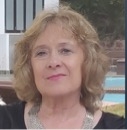
One of the things SCLC does best is to facilitate collaboration. Using the performance partnership model introduced by deputy director Connie Revell in 2003, SCLC—and others—have had tremendous success getting tangible results from groups with a common mission.
One of the features that sets the performance partnership model apart from others is its insistence on separating the “what” from the “how” at the very beginning of the collaboration, which Connie says is “not very intuitive.”
“People have a lot of ideas on how to solve a problem,” Connie explains, “but, when you start to get granular, they often have slightly different ideas on what the problem actually is, so their solutions can end up being off-target. If you first get everyone to agree on a very specific ‘what’—as in ‘what we are trying to achieve’—you can be flexible and creative and experiment with a combination of strategies to address that particular problem.”
For example, SCLC employs the performance partnership model when working with our academy states. A group of state leaders convenes to lower the smoking prevalence in the behavioral health population by “x” percent. That’s the ‘what.’ All present at a state summit agree to a baseline and a target number to ensure that strategies are trackable and moving the goal forward. Then they develop an action plan to achieve that goal. That’s ‘results-based accountability.’
And the results are impressive. Recent analysis shows that, each year after a summit, the prevalence in that state continues to decrease by about 1%, and so far, 25 states have held a summit to create a plan of action that will lower the tobacco prevalence in the behavioral health population.
Connie came to SCLC having worked with governments—both state, with three governors in Oregon, and federal, in the Clinton administration. “Vice-President Al Gore had the aim of making a government that worked better and cost less, to restore people’s trust in and support of the country’s leadership” she recalls. “So, we implemented the performance partnership model in the White House after it was initially created in Oregon to bypass red tape and achieve measurable goals.”
Later, while Connie served as the communications director for the Oregon Public Health Department, she found that she loved fighting big tobacco; so, when she moved to San Francisco in 2003, she was excited to bring the performance partnership model to SCLC as the deputy director.
“I talked about how the model could work for rallying people around smoking cessation during my interview with Dr. Steve Schroeder,” she remembers. “He was interested in the idea and saw its potential. I’ve always admired him and his wonderful ability to talk about complicated concepts simply and gain support from various groups of people.”
Under the performance partnership model, the first partners to help promote the benefits of cessation to their specialty’s professional membership were the dental hygienists. “Dental hygienist and professor, Peggy Walsh was great friends with Steve, shared a passion for tobacco control, and their offices were close to each other, so it felt natural to pitch them first,” she says. “The American Dental Hygienists Association was instrumental in developing the Ask, Advise Refer protocol with us, simplifying the Five A’s protocol and employing quitlines.”
The following year, Linda Aragon of the Los Angeles County public health department teamed with SCLC to create “It’s Quitting Time L.A.,” a large and successful collaboration of local officials, nonprofits, business and faith leaders that worked to reduce smoking prevalence in the county. Many other fruitful partnerships followed.
Connie left SCLC in 2010 to return to government and work with the Obama administration.
Over her career she traveled widely, working with leaders on projects like enhancing security in Sierra Leone and improving water quality in Tasmania. “The approach works with any topic,” she explains, “because it’s about getting everyone to row in the same direction toward the same ‘what.’ It’s satisfying work because successful partnerships can be so effective, but it takes very conscious, methodical organizing.”
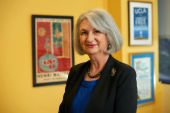
SCLC is not the only organizational champion for smoking cessation turning 20 this year. Tobacco-free Nurses (TFN), co-founded in 2003 by Linda Sarna, PhD, RN, FAAN and Stella Aguinaga Bialous, RN, DrPH, FAAN, Co-Principal Investigators, also has a two-decades-long history of encouraging cessation interventions. Fittingly, Stella nominated Linda to be interviewed as one of our 20 champions!
The co-founders, colleagues and friends met in Brazil in 1998 at a conference where Linda was speaking at a session about nurses and tobacco. She first met Steve Schroeder, SCLC founder, at a conference on Tobacco Or Health in China in 1997 where she decried the lack of nursing involvement in quit efforts. He was in the audience along with many members of media (most of whom unfortunately left after beauty queen Miss Sweden spoke, and before Linda did!). Steve came up to her afterward, introduced himself and said, ‘Maybe we can help you.’”
Having been an oncology nurse caring for patients with advanced lung cancer, Linda had seen the harms of tobacco firsthand and developed a strong interest in helping people quit smoking.
“One of our unanswered questions was, ‘why aren’t more nurses more involved?’
SCLC’s mission to increase the healthcare professionals who delivered cessation interventions to patients and Linda’s passion for engaging nurses in cessation dovetailed nicely.
“We knew we could make a big difference if we got nurses on board because nursing was—and still is—the country’s largest healthcare profession, so we started by identifying barriers to nursing involvement,” Linda explains. “And we learned that one of the biggest was an 18% smoking prevalence among nurses, which was higher than other health professionals.”
TFN was soon founded to both equip nurses to help their patients stop smoking by providing nurses’ much needed education about evidence-based practice, and also to support them in their personal quit journeys.
“Funding from SCLC was critically important,” Linda says. “This helped us engage nurse educators as well as nurse scientists, who looked at implementation research to put evidence into practice. These efforts enhanced how we helped patients make quit attempts and contributed to lowering the overall prevalence of smoking among nurses. SCLC also helped support TFN in leading a conference for nurse leaders of many different organizations to promote tobacco control as part of a nursing agenda.”
Among their many accomplishments, TFN developed a pocket guide to the 5As of cessation, Helping Smokers Quit- A Guide for Clinicians, which has been one of the most widely requested print documents from the Agency for Healthcare Research & Quality, republished in many formats and translated into multiple languages.
Since TFN was launched in 2003, there has been a 36% decline in the prevalence of smoking among registered nurses, to an all-time low of 7% in 2011, as reported in JAMA as part of the issue celebrating the 50th anniversary of the US Surgeon General Report. And, since they’ve worked in China, Hong Kong, the Czech Republic, Poland, Hungary, Moldova, Romania, Slovakia, and Slovenia in addition to the U.S., TFN was recognized by the World Health Organization (WHO) as an exemplar of health professional advocacy in tobacco control. Linda and Stella also wrote a monograph for WHO emphasizing the work of nurses in enhancing the capacity of nurses to contribute to the prevention, treatment and management of noncommunicable disease, including tobacco control.
Linda’s work in tobacco control also helped her lead efforts to implement the tobacco free policy at UCLA. Retired since 2021, Linda still follows research and trends and says she’s encouraged that recent neuroscience research may lead to new and improved ways of treating addiction, including nicotine addiction. She still holds a fire for the cause saying, “Nurses are still the largest and most diverse group of healthcare providers, so we must keep at it!”
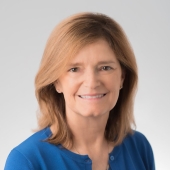
Talking with Robin Corelli, Karen Hudmon, and Lisa Kroon together is a treat. It’s clear they’re good friends as well as long-time close colleagues.
These three women have been instrumental in the creation and stewardship of Rx for Change.
Robin Corelli and Lisa Kroon are both Professors of Clinical Pharmacy at UCSF and Karen Hudmon (formerly at UCSF) is now Professor of Pharmacy Practice at Purdue University in Indiana.
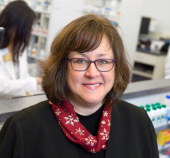
“We genuinely like each other,” Lisa quips.
“Which is a good thing,” Karen adds, “because Rx for Change is truly a labor of love.”
Requiring constant updates that the three of them do themselves in addition to their roles as pharmacy faculty, Rx for Change is a comprehensive training program that is used by health professional trainees and practicing clinicians to learn how to treat tobacco use and dependence. It’s freely available online, and many of its components have been translated into other languages over the years.
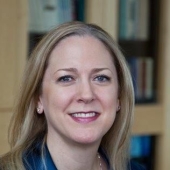
In an introductory video, Surgeon General Dr. Vivek Murthy describes a need for all healthcare providers to become active in helping to address tobacco use. Rx for Change was created to transform the landscape of clinician education related to treating tobacco use and dependence. And with a 24-year history, the transformation that Dr. Murthy mentions in his introduction to the Rx for Change program is well underway.
In the space of two short decades, pharmacists have had the opportunity to become champions for tobacco cessation, and this team’s efforts has led to pharmacists providing tobacco cessation services, including prescribing medications in many states.
Through a collaboration with pharmacy faculty from the University of the Pacific, the University of Southern California and Western University, the Rx for Change curriculum was piloted with students in the California schools of pharmacy in existence in 1999. “It was truly a team effort, with faculty co-teaching the content in pharmacy classrooms across the state” recalls Robin.
Based on strong positive feedback from students and compelling preliminary program evaluation data, the team decided to expand the reach of Rx for Change. “The number of hours devoted to the development of the curriculum was enormous and we were confident the materials would be useful to faculty across the country,” said Karen. “It made no sense for faculty at the other 87 schools of pharmacy in the US to ‘recreate the wheel,’ and the concept of a shared tobacco cessation curriculum was born,” Lisa added.
They started with a goal of training two faculty members at every US pharmacy school so that these faculty could then teach the curriculum to their students. A staggering 89 out of 91 schools sent representatives to attend the initial training, and 85% then adopted the curriculum, which more than doubled the amount of tobacco-related education pharmacy students received.
“While Rx for Change was originally designed to train pharmacy students, it became abundantly clear that most licensed pharmacists lacked sufficient knowledge and skills to provide cessation counseling in patient care settings” explained Robin.
“With nearly 90% of Americans living within 5 miles of a community pharmacy and almost 60% indicating they would visit a pharmacist with non-emergency health issues, training pharmacists to assist in cessation seemed like a logical step toward making a significant impact,” Karen explains. “Enhanced access is key. Pharmacists are clinicians with regular patient contact. If primary care providers don’t have time to address tobacco use during an office visit, pharmacists can fill this gap in care,” Lisa says.
But the application of the Rx for Change curriculum is not limited to pharmacists.
“Honestly, Steve Schroeder and SCLC have been the biggest catalyst for the transformation of Rx for Change as an interprofessional tool,” says Robin. “And it’s been more than 20 years for both programs, so in a sense, SCLC and Rx for Change have grown up together!”
Now, for example, there are versions of Rx for Change for cardiology, psychiatry, and respiratory care providers. “Part of keeping the program sustainable is making it applicable for all clinicians,” Karen says. “The more people who have the opportunity to intervene, the more potential there is to save lives. But they must be educated. We, like Steve, are ‘clinician agnostic’. And like SCLC, our philosophy involves collaboration, partnership, and open access.”
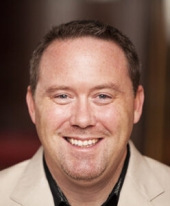
When Chad Morris, PhD, began his career in psychiatry, he had no idea that he’d become a key player in the tobacco control world.
“I was working with patients who suffered from schizophrenia and bipolar disorder, running clinical trials and developing evidence-based practices, and I was also working with the governor’s office consulting on statewide policy,” Chad recalls. “But around 2001, I changed my career path when I saw data on the tremendous health disparity that commercial tobacco use and obesity cause in the population I serve; they are the two biggest killers of people with mental illness.”
Chad had been collaborating with state officials and other leaders on reentry programs for those exiting treatment facilities and realized that the individuals he was trying to help weren’t living long enough to benefit from the programs he was working to create.
“It became clear that, if we wanted to help patients lead their most meaningful lives, we would be missing the boat if we didn’t address this huge health disparity created by commercial tobacco use,” he says.
So, in 2006, Chad created the Behavioral Health & Wellness Program at the University of Colorado Anschutz Medical Campus, where he is a Professor of Psychiatry.
He found a mentor in Smoking Cessation Leadership Center (SCLC) founder, Dr. Steve Schroeder. “He was a huge force in the field,” Chad says. “Steve was instrumental in opening doors to changemakers for me.”
One of those changemakers was Dr. Jill Williams, a psychiatrist at Rutgers University, who had started CHOICES, a peer driven program that trained individuals with lived experience in addiction recovery to help those seeking recovery navigate their way through complex, sometimes confusing, systems to get the services they needed.
Based on CHOICES, Chad created his successful DIMENSIONS Tobacco Free Program, Well Body Program and Peer Support Program.
“The shared philosophy between CHOICES and DIMENSIONS is that consumers need to drive their own treatment and peers, those who have lived through similar experiences, are their most trusted advisors,” explains Chad. “With that in mind, we actually started training peers to offer the services themselves as opposed to helping find suitable providers.”
To date, DIMENSIONS has directly trained more than 8,000 peer specialists to promote recovery from mental illness or substance use disorder in behavioral health settings.
Chad believes that peer specialists will continue to be an invaluable part of tobacco treatment and will help reach other priority populations, for example justice-involved individuals.
“There are peer groups being trained to work specifically with this community because peers can address the isolation this group tends to feel in a very personal way,” he says.
Chad estimates that the criminal justice system is now where behavioral health facilities were about a decade ago in terms of the culture around smoking.
“Smoking used to be a way to bond, both between patients and between providers and patients in behavioral health settings,” he says. “It’s similar in jails and prisons today, with some also believing the myth that cigarettes will soothe and calm individuals.”
“You’d think after doing the same presentation for 15 years, I’d be done explaining that that’s not the case!” laughs Chad. “But we’re definitely over the hump and the growing body of evidence really does convince people—it’s just a matter of getting that evidence in front of the decision-makers.”
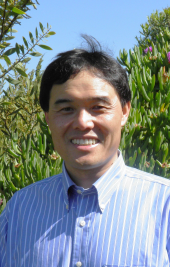
Shu-Hong Zhu, Ph.D., has been the Principal Investigator for Kick It California since its inception in 1992. Formerly known as the California Smokers’ Helpline, Kick It California is a free program operated by UCSD that helps Californians quit cigarettes, vapes, and other forms of tobacco.
Shu-Hong first met Dr. Steve Schroeder in 2003 after Steve wrote a commentary on a paper Shu-Hong and his team published in The New England Journal of Medicine.
“The paper showed that the quitline doubled smokers’ odds of quitting successfully,” Shu-Hong explains. “And because it appeared in The New England Journal of Medicine—a top medical journal—it brought quitlines to the attention of the medical community.”
Until then, many clinicians, including Steve, were unfamiliar with quitlines and what makes them work.
“A quitline works by connecting smokers to a quit coach, someone who really cares about helping them quit successfully,” says Shu-Hong. “The quit coach helps clarify their motivation to quit, helps them come up with a quit plan, and provides accountability and social support.”
The study that resulted in this groundbreaking paper was creatively designed, embedding research into practice, so the results could be easily translated from the clinical trial setting to the real world.
“Steve recognized that the results were a game-changer for physicians,” Shu-Hong recalls.
At the time, physicians were told to follow the 5 A’s in working with patients who smoked: Ask, Advise, Assess, Assist, and Arrange. SCLC whittled it down to a simpler intervention: Ask, Advise, Refer, because physicians now had a convenient and effective place to send their patients who smoked.
“Steve saw that a quitline could essentially become an extension of the physician’s office by providing a proven service to take some of the load off of doctors who were too busy to counsel their patients who smoked.”
The Centers for Disease Control and Prevention (CDC) also recognized the importance of these findings and encouraged all states to develop quitlines, helping create a nationwide network of such services that today is accessible from anywhere in the U.S. through a toll-free portal, 1-800-QUIT-NOW.
“Other treatments have been proven effective, including various medications and in-person counseling, but the real power of quitlines is in their reach,” Shu-Hong say, noting that Kick It California serves tens of thousands of tobacco users each year, and other U.S. quitlines serve many more.
The UCSF and UCSD teams have also worked together to dispel the myth that individuals with behavioral health conditions aren’t interested in quitting tobacco and can’t quit even if they are.
“More than half of the people we serve have a behavioral health condition,” says Shu-Hong. “The evidence shows that this population is actually more likely to reach out for help. They participate in the program, they make quit attempts, and many succeed.”
Research findings from Shu-Hong and his team have helped ground SCLC’s recommendations in solid evidence and have helped inform the Center’s focus on eliminating tobacco-related disparities experienced by individuals with behavioral health issues.
“The SCLC’s message that it only takes 30 seconds to save a life is practical and simple—especially when clinicians don’t have to do all the heavy lifting,” Shu-Hong concludes. “The healthcare system does need to step up and do more to help tobacco users quit. But if the burden falls solely on clinicians, it won’t work. The quitline is here to help clinicians help their patients. It’s effective, convenient and free.”
Want to introduce your staff or clients to the quitline in your state? Order quit cards
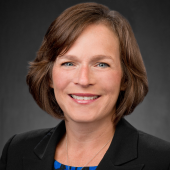
Corinne Graffunder remembers the impact made when the National Cancer Institute (NCI) published Monograph #1 in 1991. The monograph, subtitled “a blueprint for public health action in the 1990’s” was a call to action for the U.S. tobacco control movement to 1) act on the available science and 2) continue to expand the science base.
“The data allowed us to see that everything being done to successfully drive down adult smoking rates wasn’t impacting youth initiation rates,” she recalls. “We needed to pivot. Significantly. Our mantra, the ‘paradigm shift,’ required a commitment to an expanded and strengthened public health approach to accelerate and further our progress in fighting the tobacco epidemic.”
Soon after the monograph was released, Corinne wrote the Centers for Disease Control and Prevention’s (CDC) first Request For Proposals (RFP), funding what would become the National Tobacco Control Program (NTCP), that today supports all 50 states, U.S. territories and tribal nations to advance their tobacco control measures.
The initial CDC grants learned from, built upon, and complimented the National Cancer Institute (NCI) American Stop Smoking Intervention Study for Cancer Prevention (ASSIST) trial and effectively established a network of national and state-based partners supporting evidence-based strategies—and each other.
These entities—state and local tobacco control programs, tribal, community, and faith-based groups, and academic and nonprofit organizations like Americans for Non-Smoker’s Rights (ANR)—all became part of and created what Corinne calls “a disruption”—a deliberate shift from the strategies previously employed to combat the public health threat brought by commercial tobacco, to those found most effective in creating sustainable, normative, community and population-level impact.
“By the mid-1980s to early 1990s, there was clear support for and a focus on policy strategies. And, as the effectiveness of these strategies was realized, there was a growing recognition that the policy work created a moral and ethical obligation to support cessation services. Corinne explains the importance of “cessation support accessible to everyone—it couldn’t be expensive, exclusive, or difficult.”
Corinne’s 30 plus-year CDC career culminated in her serving as director of the Office of Smoking and Health (OSH) from 2015-2020.
As director, she continued pursuing new and important strategies supported by updates in the available data and science. For example, she and SCLC founder/then-director, Dr. Steve Schroeder, shared a concern for and desire to focus on equity in cessation, as data at the time showed that cigarette smoking in the U.S. was two to three times higher among individuals struggling with behavioral health challenges than among the general public. Corinne served as CDC’s first representative to the SCLC and American Cancer Society National Partnership on Behavioral Health and Tobacco Use, initially convened in 2016 to address this disparity.
Corinne admits that she misses her OSH days and often reflects on how the lessons she learned in tobacco control remain core to her personal and professional philosophy and commitment to improving the public’s health. “Long-standing and meaningful new partnerships are really the secret sauce in OSH’s success,” says Corinne. “The people were the best I’ve ever worked with—their dedication and the commitment they make to the work is just extraordinary.”
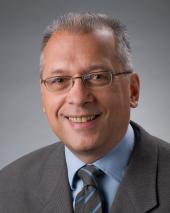
When Frank Vitale’s friend Jan was hospitalized with severe diabetes and related conditions, she got the same advice from three different providers: the doctor, who was, in Jan’s opinion, lacking a sense of humor; the nurse, who was “only 24 years old,” and, finally, a pharmacist, who was easy on the eyes and quick to smile. When Frank asked what she thought of her care team’s instructions, it was only after her interaction with the pharmacist that Jan agreed that she would make some changes to benefit her health.
Jan’s story is a perfect illustration of Frank’s philosophy: “Every health care provider should incorporate cessation into their message and do so at every opportunity,” he emphasizes. “Because YOU just might be the one who gets through to someone.”
To date Frank has trained tens of thousands of healthcare providers to help their patients and clients quit smoking. “It never gets old,” he says. “I like teaching people skills to help someone achieve their goal of quitting smoking,” Frank says. “It feels like I’m helping even more people than I did when I was in direct patient care—those who get the skills they need and those they go on to help.”
An actor at heart, Frank says he feels like he’s “entertaining” when he presents a training, which he feels sets him apart and helps his audience remember his teachings. “I also love meeting interesting people; I find the social aspect of presenting these trainings to be a lot of fun,” he says.
Frank became involved in training cessation specialists on a large scale in 1996, when the Nicotine Replacement Therapy (NRT) options, the nicotine patch and nicotine gum became available over-the-counter without a prescription. “The pharmaceutical company SmithKline Beecham realized that pharmacists had never been trained in counseling clients about their products—Nicorette gum and the nicotine patch, or in how to help their patients quit permanently,” Frank recalls. “So, it seemed like training pharmacists on the importance of cessation and the efficacy of NRT would be a good idea since they had regular contact with potential consumers and tend to develop long-lasting relationships with them.”
While doing one of these trainings in San Francisco, Frank met practicing pharmacists Karen Hudmon and Robin Corelli, with whom he later collaborated to develop Rx for Change, a cessation specialist curriculum for pharmacy students. They introduced him to Dr. Steve Schroeder, founder and director of the SCLC.
At the time, SCLC was also trying to widen the net in terms of providers who could and would deliver the cessation message to clients who smoked. Missions aligned and Frank has since presented comprehensive cessation trainings for a number of SCLC events.
Throughout his career, he’s seen “huge wins” like the culture shift around smoking in behavioral health treatment facilities: “Cigarettes used to be used as a bribe for patients,” he recalls. He’s also experienced personal heartaches like his mother, a lifelong smoker to whom he never could get through. But overall, “I know,” Frank says with confidence, “that all of our efforts have made a difference in lowering the smoking prevalence in this country—especially among those with a behavioral health condition.”
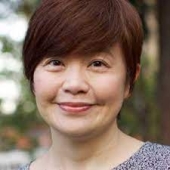
By Janice Tsoh and Catherine Saucedo
We need to talk about smoking. Yes, there is another public-health emergency still dominating the news and occupying our minds. The pandemic has been devastating. But it helps to remember that diseases caused by tobacco have not eased their deadly grip — particularly in communities of color.
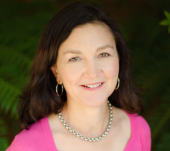
That is why the Food and Drug Administration this week proposed banning menthol cigarettes, the type that the tobacco industry has long marketed to African-American consumers. Menthols are favored by a wide margin among Black smokers, and they are a major reason that this group suffers disproportionately from tobacco-related diseases and death.
The FDA's decision stems from its realization that illness and injustice have long been intertwined. This truth has been cruelly laid bare in the last two and a half years. For generations — with lethal effectiveness — the tobacco industry has pushed its poison into communities of color. Among many individuals who are dependent on — and weakened by — smoking cigarettes or using tobacco, COVID has been finishing the job.
The coronavirus is especially dangerous for people with conditions like lung and heart disease, high blood pressure, diabetes, cancer — sicknesses that using tobacco causes or worsens, and that disproportionately attack communities of color. In the underserved Asian American and Pacific Islander communities where Dr. Tsoh conducts research, COVID-19 has exacerbated the gaps of health care, with deadly results. Meanwhile, as anxiety and depression have run rampant in these COVID times, and racist violence has spiked in Asian-American communities, many people choose smoking to manage their stress. Mood is one of the biggest triggers for continuing or increasing tobacco use, or for ex-smokers to relapse.
COVID and smoking are interconnected problems, and if we think about them together, this awareness can improve the public-health response — and the lives of many in our community.
Our research and advocacy involve trying to understand why people smoke and how to help them quit. The Smoking Cessation Leadership Center, working with health practitioners around the country, has highlighted the principles and methods that help people to break their nicotine shackles. Dr. Tsoh's research mission has been to bring to underserved populations the information and skills that will help them abandon tobacco in favor of better health.
The good news is that despite the many social and health inequities that COVID has brought to light, and addiction's powerful grip, there are interventions that work. People can break the habit, through counseling, peer and family outreach, and medications like nicotine gum or patches or inhalers. Smokers' quitlines (1-800-QUIT-NOW) work, too, free telephone counseling services available in multiple Asian languages through the Asian Smokers’ Quitline — in fact, they double the chances of quitting. And these and other methods are even more effective if they are delivered in culturally appropriate and sensitive ways, with well-targeted messages and serious follow-through. This is absolutely essential for engaging with Asian Americans and Pacific Islanders.
But here is the rub: Shaping the right approaches and messages for different communities requires information that is often unavailable. One of the greatest challenges in working with the Asian American and Pacific Islander population, for example, is the lack of detailed survey data that accounts for the vast diversity of nationalities, ethnicities, social groups and languages within those broad demographic categories.
Surveys have shown that overall, people in Asian and Pacific Islander communities use tobacco less than other groups. But generalized statistics like these don't account for the significant variations between and among communities — not to mention between women and men, immigrants and the native-born, and those who speak English and those who don't. Smoking is disproportionately high in some groups, particularly among Asian men with limited English proficiency. Cigarette use tends to be higher among those of Korean and Vietnamese ancestry than among those of, say, Asian India or Chinese descent.
Better data would help us to understand and explain these disparities. We know that mental illness and substance-use disorders disproportionately affect underserved groups and racial minorities. But language barriers and social isolation can hamper surveys measuring things like tobacco use and mental health. Fortunately, hard work on the ground can overcome gaps in the data. Dr. Tsoh and her research team have been conducting several community-based projects among Asian American smokers and their families, with lay health workers reaching out to promote quitting and healthy lifestyle changes.
We don't know all we want to know about the long-term consequences in the many communities harmed by smoking, just as we don't yet know when and how COVID will end. We do know that the journey out of addiction is often a long one, with frequent relapses. And yet we also have a very good idea of what works to reduce the damage that tobacco does to families and communities.
We know that — as with raising children — healing someone's smoking addiction takes a village, through education and a lot of compassionate support from peers and family members. As we continue to battle a virus that has ended and ravaged so many lives, let's apply some of that same urgency — along with hope and determination — in renewing our fight against tobacco, and getting smokers and their loved ones who are affected by secondhand smoke exposure to breathe freely again.
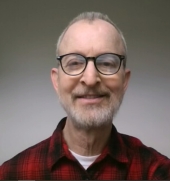
Keeping tobacco use on the radar is not always easy amidst various emerging public health crises. But Doug Tipperman believes that it’s of perennial importance.
“Tobacco-related disease is still the leading cause of preventable deaths in our country,” he says. “every year we lose about half a million lives in our country because of tobacco use.”
Doug has been instrumental in the Substance Abuse and Mental Health Services Administration (SAMHSA) support of the Smoking Cessation Leadership Center’s (SCLC) work to reduce tobacco use among persons with mental and substance use disorders.
It was a 2007 summit in Lansdowne, Virginia that marked the official beginning of SAMHSA’s commitment to tobacco cessation efforts and led to an in-service program for SAMHSA employees the following year that featured expert speakers, including SCLC’s founding director, Dr. Steve Schroeder.
“Of course, I had read many of Dr. Schroeder’s papers, so when he visited SAMHSA, I had one of them with me and asked him to sign it for me!” Doug recalls. “I remember when he spoke he said, ‘Well, I feel like a rockstar now because Doug just asked for my autograph!’”
Doug describes Steve as a mentor for him and indeed, their career trajectories have been similarly motivated. Doug began his career as a clinical social worker helping individual patients, just as Steve began as a physician; but they both moved into public health careers because they could help many more people that way.
“Working on programs that affect health at the population level has been incredibly gratifying,” says Doug. “Watching the evolution of projects like 100 Pioneers, SAMHSA’s first collaboration with SCLC, and SCLC’s work with our state leadership academies, which have now reached nearly half the country, has really kept me—and SAMHSA—engaged on tobacco use in the behavioral health community.”
Data from the National Survey on Drug Use and Health (NSDUH) show that current smoking rates are decreasing significantly for those with behavioral health conditions. “We can’t know definitively, but I have to think that our collaborations have played a big part in that progress,” Doug says.
“There is still a huge disparity in tobacco use between those with behavioral health conditions and those without,” continues Doug. “But we have to remember that, not so long ago, the culture around smoking in behavioral health communities was very different. For example, not long ago tobacco use was condoned among behavioral health therapists - some even smoked with clients as a way to build rapport. Now, behavioral health providers are increasingly adapting tobacco cessation practices including tobacco use screening and offering cessation intervention - counseling and cessation medications such as nicotine replacement therapies. There is a growing body of evidence showing a strong association with smoking cessation and improved mental health as well as addiction recovery outcomes. We hope to make tobacco cessation services common practice in behavioral health settings.
What else would lifelong public health warrior Doug Tipperman like to see in terms of combatting the harms of tobacco use in America? “My dream is already in the works,” he says. “I believe reducing the level of nicotine in cigarettes and certain other combusted tobacco products below the level of addiction will be a game changer.”
A Chat with SCLC Founder, Dr. Steve Schroeder

When Dr. Steve Schroeder was ready to step down from his role as the president of the Robert Wood Johnson Foundation, the powers that be asked him to run a program and gave him his choice of which program to helm.
“There were a lot of nudges toward working on quality of care or primary care,” he remembers, but I wanted to work on a subject that seemed underappreciated and that could save lives.Having been a physician, I knew the effects of smoking on my patients and didn’t think there was enough being done on cessation; the focus at the time was mainly on anti-smoking policies.”
So, Steve started the Smoking Cessation Leadership Center (SCLC) at UCSF with a $10 million grant from Robert Wood Johnson in 2003.
“I was, by no means, an expert on cessation,” Steve says. “I was on the editorial board of the New England Journal of Medicine and in 2002 they asked me to do on editorial on quitlines. I actually had to call and pretend to be a smoker because I didn’t know anything about them!” What he learned on that call (during which he did eventually confess to being a doctor) impressed him, and showed another way for busy clinicians to help smokers quit.
Initially the plan was to get clinical organizations to accelerate quitting attempts by their members. But we quickly learned that they felt most clinicians were simply too busy to spend the needed time for smoking cessation efforts. Thus, a new strategy emerged.At least, they could become aware of quitlines and take 30 seconds to save a life, using either the 5As (Ask-Advise-Assess-Assist-Arrange) or Ask-Advise-Refer, with the referral being to the quitline. “I get it; they’re busy,” says Steve, “but when you’re a physician with a patient and you find something to treat, you don’t say, ‘I don’t have time to help you.’”
Steve soon became a cessation expert thanks to the Rx for Change curriculum, a comprehensive online program developed by three UCSF pharmacists that trains students and licensed clinicians in the treatment of tobacco use and dependence. And it’s designed to be used by virtually any health professional.
The cross-disciplinary aspect of Rx for Change sparked another idea and one that Steve was well-positioned to implement given his recent tenure at RWJF. “I knew people who led clinical organizations and they’d heard of me,” he says. “So, I could make introductions and connections for all kinds of groups who could implement cessation efforts and could help each other.”
And so it was that identifying cessation champions and supporting them became the Center’s mode of operation. “Instead of developing our own brand,” Steve explains, “we developed our partners—gave them grants and technical support, put them in touch with people who could help, and so on.”
In 2000,an article appeared in JAMA pointing out the huge burden of smoking on behavioral health populations. “When SCLC started, cessation experts we contacted cautioned that this group of people wasn’t particularly interested in quitting smoking,” Steve recalls. But, being the son of first generation Americans who were both very active in community service, it bothered him to see such a huge population of smokers left out of cessation efforts.
The SCLC’s next grant from the American Legacy Foundation (now the Truth Initiative) went toward developing champions in behavioral health fields. Those partnerships with SAMHSA, NASMHPD and NAMI are still thriving.
Steve only retired last year at the age of 82. “I wanted to solidify the Center’s finances before I left, which I’ve done,” he says.
He believes that SCLC’s new director, Dr. Maya Vijayaraghavan is a “wonderful fit,” who has already pledged her commitment to achieving some of the goals he also sees for our future, like becoming better integrated in UCSF and participating in more research with UCSF’s CTCRE.
“After RWJF, I thought I’d do this for five years and then retire,” laughs Steve. “But clearly, it’s become so much more.”
Going Tobacco-Free: Wisdom from LA CADA's Arlene Vasquez
Los Angeles Centers for Alcohol and Drug Abuse has 12 locations in LA County. And they’re planning to make them ALL tobacco free! It’s a big undertaking, to say the least, and has been complicated still further by the COVID-19 pandemic. But the administration as well as the staff are committed to making it happen, because they believe in fulfilling their motto and offering a “path to recovery and healthy living.” Arlene Vasquez, Director of Programs, was kind enough to take time out of her day to talk to me about the organization’s decision and how it’s going.
SCLC: Tell me where this journey to tobacco-free started with LA CADA.
Arlene: Improving a person’s overall health is the goal of our programs, so it makes sense to teach the facts around tobacco because tobacco is harmful to your health. We don’t want to simulate life in an institution with the vending machines full of unhealthy snacks and cigarettes, for example, making unhealthy options feel like “treats.” Because we’re not an institution and our patients aren’t prisoners; they’re patients with autonomy. We are empowering them to make their own choices from a position where we can educate them about the benefits of healthy choices. We want to maximize that opportunity during the time they’re with us. When we realized how much this goal encompasses, our CEO and Director of Development encouraged us to start by submitting an application for Allen House to join the CABHWI Community of Practice to receive funding and support.
SCLC: That’s great! Now, why not just pat yourselves on the back? Alice House is doing the grant work now and you plan to continue even after their grant ends. Why continue?
Arlene: We have so many different facilities that address individuals at different points in their recovery. It doesn’t do anyone much good if our residential program is tobacco-free and then an individual transitions to outpatient and they’re tempted to smoke again. We really want to set them up for success by offering consistency throughout the continuum of care we provide.
SCLC: What have been the biggest challenges?
Arlene: Actually, we had a significant challenge with staff buy-in initially. There’s this prevalent myth—among staff and patients—that smoking calms. But then, when we started teaching the facts and made other options available that really do relieve tension, like gardening, for example, we ended up with a lot of champions on staff. And it goes all the way down to the language. Now, it’s it’s a “self-care break,” not a “smoke-break.” Accurate naming with affirming language has been really important. And, of course, with COVID, there have been a lot of staffing challenges with people having to miss work due to exposure or quarantining. But we’ve moved some individuals to different positions. We have definitely seen the benefits of being aware, well-informed and adaptable!
SCLC: What has worked well or given you the greatest satisfaction?
Arlene: We’ve done a lot that is working. First, we incorporated a tobacco-use screening into our intake procedures. Education around medication-assisted treatment and NRTs has been very helpful. And some of the new “substitutes” for smoking, like the garden, have really created bonding opportunities for folks, including staff. Now, no one can leave the group and go out for a smoke, so instead, two or three people go on a walk together.
SCLC: Thanks so much for sharing LA CADA’s story, Arlene!
Arlene: I hope others can benefit!
A chat with Chelsey Copeland, Wellness and Prevention Coordinator at CKF
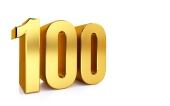
When a classmate got out his vape in the classroom during a teacher’s momentary absence, Chelsey Copeland’s 13-year-old son, Tyson, told the kid—and the class—that none of them should be vaping.
He was bullied because of it. But the bullying didn't deter Tyson from continuing to speak up.
“He’s seen the struggles I’ve had,” says Chelsey. “He’s seen the difference between addiction and recovery.”
The struggles Chelsey references include having revived her fiancé after he overdosed. He’s now healthy, sober and thriving. But she believes there are several addicts in her family who don’t think that they have a substance use disorder.
“There’s still a stigma attached to these kinds of issues. The community in general, in particular our police and the entire justice system, tend to see addiction and mental illness as a crime instead of a medical emergency,” she says. This perception of mental illness and substance use disorders is what Chelsey would most like to see change. “I believe people struggling with addictions are good people who’ve been without certain advantages.” She continues, “I’m a fixer and I am super passionate about filling in gaps where people are missing support—having a friend can be life-changing, and life-saving.”
It’s that helping spirit that fuels her passion and why she’s happy to be working as the Wellness and Prevention coordinator at Central Kansas Foundation’s, Salina campus where she runs peer support groups for residential clients.
CKF is tobacco-free at all three campuses: Salina, Abilene and McPherson. Chelsey says she’s noticed a difference when patients leave after entering treatment as tobacco users. “People seem much more anxious when they come in smoking or vaping than they do after they’ve quit during treatment. It’s a significant difference that’s obvious in their mood,” she explains.
CKF’s journey toward becoming tobacco free began in 2009 when they became one of the 100 Pioneers. The pioneers on SCLC’s 100Pioneers listserv currently number over 4600, but the “original 100” were grant recipients from SCLC and SAMHSA. SCLC, who had received their organization’s first SAMHSA grant, wanted to collaborate with and connect other organizations committed to tobacco-free recovery services for individuals with behavioral health problems. So, in order to accomplish this and share their SAMHSA wealth, SCLC established a program by which 96 organizations were given a modest honorarium to become a part of the 100 Pioneers for Smoking Cessation Virtual Leadership Academy.
By being a member of the academy, organizations who were already SAMHSA grantees, would pledge to undertake a project with the goal of accomplishing one of the following aims:
-
providing training and technical assistance to other SAMHSA grantees to raise awareness of the many benefits smoking cessation efforts and to increase understanding of effective smoking cessation strategies
-
implementing or enhancing existing tobacco cessation services using evidence-based practices
-
implementing smoke-free environments
-
ensuring that consumers and staff have access to smoking cessation services and supports to promote health and wellness
-
establishing partnerships between behavioral health and nicotine cessation organizations to increase available tobacco cessation resources in communities.
“We chose the name ‘pioneers’ because these organizations were both big and small, but community-based, and really breaking new ground in going tobacco-free,” says SCLC’s Director of Partner Relations, Christine Cheng. “When I think back to those that were in this original group and which of them I still keep in touch with regularly, CKF leaps to mind,” she says. “They’ve always done impressive work.”
Though Chelsey only joined CKF in 2022, she agrees wholeheartedly. “Everyone here is amazing, really supportive of the clients and of each other,” says Chelsey. “I’m very proud to say I work here.” In a way, her own journey to working at CKF mimics that of the organization itself; both Chesley and CKF started as pioneering champions for tobacco-free recovery, and they remain committed to making it happen.
Four Months and Counting: What's Different Now That Benny Adasha Has Quit Smoking
(Chabad Treatment Center was a member of the fourth and final cohort of organizations who participated in the California Behavioral Health & Wellness Initiative and received technical support from SCLC.)
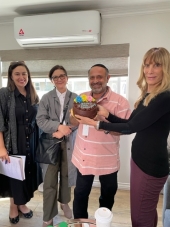
On a recent visit to Chabad Treatment Center in Los Angeles, members of our SCLC team participated in a celebration (pictured) marking Operations Manager, Benny Adasha’s 11th day of being smoke free! We followed up with Benny a couple months later to see how he’s doing and here’s what he had to say:
SCLC: Congratulations on quitting, Benny! How long has it been?
Benny: It’s been almost 4 months now!
SCLC: How did you do it?
Benny: Well, it’s not the first time I’ve tried! I’ve tried many times, using the patch, gum, even Chantix, but I was never able to stick with it. This time I used a cinnamon stick to suck on and breathe through during the day, and when cravings got really bad, I would put on a patch around noon until about 8pm in the evening.
SCLC: So, what made quitting different this time?
Benny: To be honest, I knew in my head that I needed to quit before, but something inside me just didn’t want to stop. I think this time, it was the people I love and one conversation in particular with my nephew, the oldest of my sister’s 5 kids. I’m like a father to them. This young man has always been really smart, loves school and is currently studying dentistry at UCLA. He, and all my nieces and nephews, have always told me to quit. He asked me to get my heart checked, which seemed strange, so I asked why. He said, ‘There is one class I have to take and I hate it. It’s all about heart and lungs and the damage smoking does to those organs. I hate it because it makes me worry about you and I sit there feeling stressed the whole time, every time.”
I literally cried. To realize that my health was so important to him and affected him so much.
SCLC: Wow. That would definitely make an impact on most people! How does he feel now that you’re doing so well?
Benny: Oh they’re all so happy! My niece is pregnant, and she said at her gender reveal party that the two things she was most happy about in the whole world were her soon-to-be baby and that her uncle had quit smoking.
SCLC: That’s so special. It’s got to make you feel good. Have you inspired anyone else at Chabad to quit?
Benny: Yes! Two of our clients quit with me. It’s good to have the community.
SCLC: I bet. Speaking of that feeling of belonging, do you remember if that had anything to do with why you started smoking?
Benny: Sure. I moved to America, Oklahoma City, from Iran in 1979. There was lots of racism and prejudice, so I really hated being Persian and I hated being Jewish. That was a huge reason why I got into drugs and smoking. I didn’t want to claim my identity; I just wanted to be “cool,” and at that time, I didn’t realize I had an underlying issue with addiction.
SCLC: So, would you say quitting smoking is like recovering from any other addiction?
Benny: Definitely. Because it becomes the way you deal with problems. Smoking was never fun; drugs were never fun. They just took the pain away, so they felt fun.
SCLC: How do you feel now that you’ve quit?
Benny: I feel better, especially mentally. To be honest, smoking was a pain in the ass. I was always having to walk away and miss the action. I hated the smell, so I never smoked at home or in the car; I always had to find another place. And traveling, like the 6-hour plane ride to New York?! It was a nightmare!
SCLC: What advice do you have for others who want to quit smoking?
Benny: I would say, pay attention to how you talk to yourself. Sure, quitting is hard, but it’s actually not as hard as I made it in my mind. When I felt anxious or stressed, I would tell myself that I needed a cigarette. But I don’t want a solution that harms me. So, now I tell myself that I can go without smoking, and I just let the emotion come, and pass. And slowly, I’m not smoking and my confidence has grown, too.
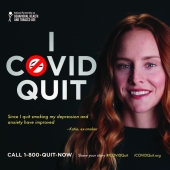
Katie Rodgers wrote an op-ed entitled "How the pandemic helped me quit smoking" that was published in The Hill. Read it online
When she retired from a successful career in real estate, Cindy Carlson was looking forward to walking her dogs, cooking in her dream kitchen, volunteering, and doing all the things retirees do when they devote themselves to enjoying life after years of working.
Things changed, however, when she went from being president of Progress House’s board of directors, to reluctantly stepping in as executive director of the facility.
“I said I’d give it six months, and that was almost three years ago now!” Cindy laughs. “Progress House has personal significance to me and now it feels like my legacy in a way, to get the place in shape and leave it in good hands.”
Before Cindy took over the role of Executive Director, she’d witnessed rollercoaster-like highs and lows the organization and its clients were subjected to under the previous struggling Directors. “It was more like a recovery hangout than a business,” Cindy recalls. “You couldn’t really tell the staff from the clients.”
Progress House had already been awarded a grant to work with SCLC, so Cindy first assigned a staff member to manage the grant, but when that didn’t work out, she started meeting with Christine Cheng and Brian Clark of SCLC herself. The grant was part of the California Behavioral Health and Wellness Initiative (CABHWI) and aimed to get substance use treatment facilities like Progress House to move toward becoming tobacco-free.
“It was hard; I cried for two months,” she remembers. “I swore a little too! But those weekly conversations with Christine and Brian became my ‘safe place’ and they become my backbone. I looked forward to meeting with them and I learned so much as they held my hand and taught me the myths about smoking,” says Cindy.
As she learned, Cindy made sure that Progress House began assessing clients for tobacco use and gambling behaviors. They started offering cessation services and wellness classes. They designated smoking areas far away from the common areas to make it less convenient for people to take a “smoke break” and started calling all breaks “wellness breaks.” Additionally, they implemented programming that promotes physical activity.
They also implemented policies for staff, ensuring that no one smoked or vaped at work, so the entire environment promotes wellness for everyone.
Cindy has been presenting on Progress House’s successes alongside members of SCLC since concluding the work for the CABHWI grant. She is also preparing a hand-picked successor, Damien Benavidez, to take over when she eventually steps down from being Progress House’s Executive Director.
But until then she says, “We’re ‘better’ now, but I want us to get to ‘best,’ and I’ll continue advocating and promoting the tobacco cessation work until it’s regular routine and part of every program. I tell people it really is worth it to quit using tobacco—we’ll be glad to have you around a little bit longer.”
Gail Hutchings remembers the connection she made with SCLC on behalf of the Substance Abuse and Mental Health Services Administration (SAMHSA) as one of the proudest moments since the five years she spent as Chief of Staff there. “The work we did together was important and results oriented,” she says. “It passed my ‘Dean test’.”
Gail’s cousin Dean died as a result of schizophrenia. When faced with a decision, Gail often asks herself, “Would this have made a difference for Dean?” It’s what she calls “the Dean test.”
In 2003, through an introduction by colleague Dr. Bob Glover of the National Association of State Mental Health Program Directors (NASMHPD), she encountered Dr. Steve Schroeder and Connie Revell from SCLC. They presented compelling evidence about the disproportionate harm tobacco use causes in people with mental health and substance use issues.
“Learning about the tobacco industry’s targeting practices of people with behavioral health issues, labeled by the industry as project SCUM (sub-culture urban marketing),” Gail recalls, “really got my Irish ire up. So many deaths, a disproportionate number of them in the population I serve, are attributed to tobacco-related causes every year and they’re preventable!”
Thus began one of the key partnerships of SCLC’s first 20 years—a partnership with SAMHSA, which has led to, among other things, leadership academy summits to lower the prevalence of tobacco use in the behavioral health community in half the states in the country.
“SCLC showed us data to tell a complete story,” says Gail. “They explained the science of how addictive smoking is and how difficult it is to stop, but they also showed evidence that approaches like Ask-Advise-Refer and medications such as varenicline worked.”
SCLC presented this information at an in-service training for SAMHSA staff.
“Many people still tell me that that training was a turning point for them because they hadn’t realized how pivotal it would be to have behavioral health treatment facilities go tobacco-free,” Gail says.
After presenting the data and getting commitment, then came the actual work of acting on the information and making a difference. SCLC and SAMHSA did it together by forming partnerships with each other as well as giving small grants to other organizations, for example, those that became the original 100 Pioneers. Gail’s work with SCLC also led to other pivotal partnerships with major players in the mental health and substance abuse fields including the National Alliance for Mental Illness, Mental Health America, National Council of Mental Wellbeing and many others.
“Partnerships were—and are—essential in this work,” says Gail. “SCLC had the expertise in smoking cessation and forming effective working partnerships coupled with the humility to ask for our expertise in the behavioral health field. No one is a better partner than SCLC.”
Download "Smoking and Behavioral Health in the Time of COVID-19"
Smoking and Behavioral Health in the Time of COVID-19

